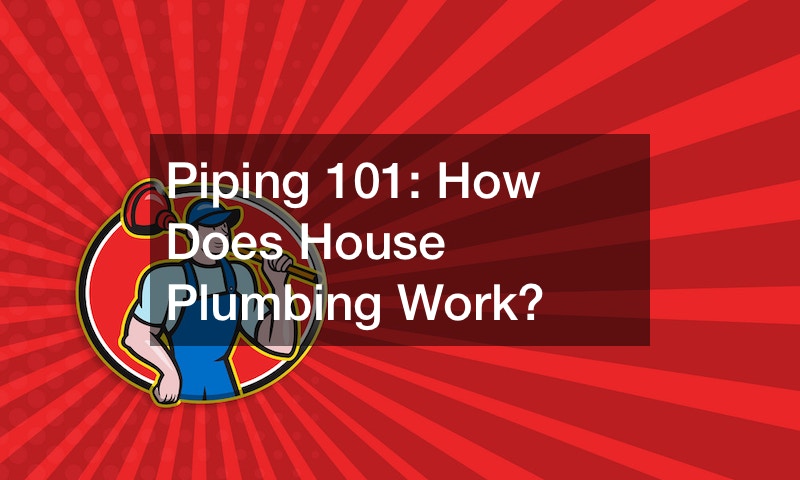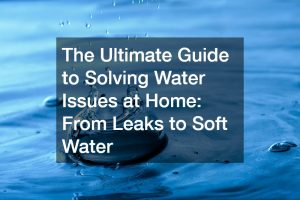

When clogged drains disrupt your daily life, it’s time to turn to professional drain cleaning companies for help. You might be wondering which drain cleaner for galvanized pipes to use for an effective solution. Well, in emergencies, opt for emergency drain clearance services to restore your plumbing’s functionality quickly.
If you prefer a more proactive approach, consider using a free drain line control drain cleaner. This solution often comes in a white bottle and can help maintain clean, clear drains to prevent future clogs. The free drain line control drain cleaner effectively keeps your pipes free-flowing and reduces the risk of blockages.
Remember, clogged drains can lead to numerous inconveniences, from slow water drainage to potential backups. Drain cleaning companies have the expertise and tools to tackle even the toughest blockages, ensuring your plumbing operates smoothly.
So, when you encounter drain issues, take advantage of these services and products. For immediate relief, emergency drain clearance is your solution, while a proactive choice like the free drain line control drain cleaner can keep your pipes flowing freely.
Don’t let clogs disrupt your daily life; address them swiftly with the right drain-cleaning solutions. Call your local plumber for the best in free drain line control nada cleaning and to find out the best drain cleaner white bottle services available in your area!
While you may hopefully never have to do major fixes to your home’s plumbing yourself, it’s always a great idea to know how your plumbing works. This way, you can know what to expect when you call your local plumber to do a repair or two. That said, it’s a great idea for you to find a reliable professional like a 24-hour plumbing supply who you can call for emergency heating and plumbing. That way, you won’t have a hard time when a plumbing issue arises at an odd hour.

It’s a good idea to search for details on things like “when should I call a plumber?” and more. As a result, you’ll be in a great position to act long before an emergency even becomes prevalent. You can also search for information on “emergency plumber blocked toilet” and more. This way, you can understand the details that go into plumbing a lot better and learn the warning signs to look out for.
Keep in mind that prevention will always be a lot better than cure. This means that it’s best for you to learn the ways in which you can maintain your plumbing to keep the chances of an emergency low. By doing this, you can make your life at home a lot more comfortable.

House plumbing is critical to ensuring that clean water is distributed to your home. Plumbing is responsible for removing wastewater from the house. As a homeowner it’s important to understand how your plumbing works as a homeowner. This helps you find common issues and make informed decisions. This guide explores the basics of how does house plumbing work and the common plumbing services available.

The Water Supply System
When you are wondering how does house plumbing work, you should start with the water supply system. The water supply system is part of the plumbing system that’s responsible for delivering clean water to different fixtures in a house. It has many different components. The water meter is the tool that measures the volume of water that is consumed. This allows utility companies to bill homeowners properly. The main water shut-off valve is the part that allows homeowners to control the supply of water that’s coming into the entire house. This is a critical part when there is an emergency and when repairs are needed.
There are water supply pipes that bring water from the main water line to faucets, toilets, and showers inside the house. The pressure regulator controls the pressure of the water that comes into the house. The pressure must be at a safe and manageable level when the pressure is at appropriate levels to prevent damage to pipes and fixtures. Water softeners and treatment systems are optional items that homeowners can add to their water supply systems. These options remove impurities, minerals, and contaminants from the water supply. This can enhance the quality of the water and prevent scale buildup.
The inside of the house has fixtures and appliances that are connected to the water supply system. Some of the fixtures include washing machines, dishwashers, and outdoor spigots. All of these fixtures and appliances have their own shut-off valves for individual control and maintenance. When thinking about it, the water supply system is interconnected with the drainage and waste system work together so the house’s plumbing functions properly. Regular maintenance and occasional repairs may be required to keep the water supply system in its best shape.
The Actual Plumbing System
When you want to know how house plumbing work, you should know more information about the actual plumbing system. There are several components that distribute water inside your house. Plumbing pipes are the main components of the plumbing system. These pipes are for carrying water to fixtures. These pipes also remove wastewater. There are some common plumbing pipe types. These pipes include copper pipes, PEX pipes, PVC pipes, and ABS pipes. Valves control the flow of water within the plumbing system. They are found at different points of the system. Some of these points include the main water shut-off valve near the meter, individual shut-off valves for fixtures and appliances, and control valves for specific areas or within the house.

Faucets are the fixtures that let the flow of water into sinks, bathtubs, showers, and all the other areas where water is needed. Faucets typically include a spout, handles, or knobs for controlling water temperature and flow. There are also internal mechanisms that regulate the water flow. Toilets are plumbing fixtures designed for human waste disposal. Toilets include a bowl, tank, flushing mechanism, and wax seal that connects the toilet to the drainage system. Many modern toilets have water-saving mechanisms to reduce water consumption.
Showers and bathtubs are also fixtures, but they provide water for bathing. These features include a showerhead, tub spout, handles or knobs for controlling water temperature and flow and a drain system for removing wastewater. Sinks are plumbing fixtures used for washing hands, dishes, and other items. These fixtures have a faucet, drain, and sometimes a garbage disposal unit for kitchen sinks.
Traps are curved sections of plumbing pipes designed to prevent sewer gasses from entering the house. These traps create a water seal that blocks the passage of odors while allowing wastewater to flow through. Plumbing systems have vent pipes that allow air circulation and the escape of sewer gasses. Vent pipes extend from drain pipes and through the roof to release gasses outside. The drainage system removes wastewater from fixtures and carries it to the main sewer line or septic system. This system includes a network of drain pipes, fittings, and cleanouts to ensure proper flow of wastewater flow. The hot water system includes water heaters, hot water supply pipes, and recirculation systems.

Drainage and Waste System
The drainage and waste system is an important part of your plumbing. It’s critical to know about these systems when you want to know how does house plumbing work. This system handles the removal of wastewater and solid waste from your home. It has a network of pipes, fittings, and fixtures that all work together to ensure proper drainage and disposal. The drain pipes carry wastewater from sinks, showers, bathtubs, and toilets to the main sewer line or septic system. These pipes are often made from PVC or ABS. They are installed at a slight slope to help the wastewater flow properly.
Vent pipes are critical in the drainage system. They allow air to enter and equalize pressure. They also prevent the formation of vacuums that could restrict drainage. These pipes extend from drain pipes and continue through the roof to release sewer gasses outside. Traps are another necessary part of the system. They are curved sections of drain pipes located beneath sinks, showers, bathtubs, and other fixtures. The traps contain water to create a barrier to prevent sewer gasses from entering your home. At the same time, they allow wastewater to flow freely. The typical traps you’ll find in your system are P-traps and S-traps.
Cleanouts are access points in the drainage system that give plumbers a point of entry to inspect, clean, or clear blockages. Cleanouts typically have a cap or removable covers. They are placed at key locations along the drain line. The drainage system connects to a municipal sewer line or a septic system. Your location dictates where it connects. If connected to a sewer line, the wastewater flows through the system and ends at a treatment facility. If using a septic system, the wastewater flows to a septic tank, where it undergoes natural decomposition before being released into a drain field. Backflow preventers are devices installed in the drainage system to prevent the reverse flow of wastewater into the water supply. These devices protect against potential contamination caused by backflow to ensure the safety of your drinking water.
Sewer and Septic Systems
When you want to know how does house plumbing work, you should understand the sewer and septic systems. Depending on your location, your water is either septic or sewer. If you have a sewer system, your home is connected to underground pipes that take the wastewater from residential, commercial, and industrial properties to a wastewater treatment facility. As a homeowner, you pay a fee for these services. Typically, it’s part of your utility bills. Once wastewater gets to the treatment facility, it undergoes a series of processes. This waste treatment removes contaminants, solids, and pathogens. Then the water is safely sent back into the environment. The treated water is released into rivers, lakes, or the ocean, depending on the local regulations.
With a sewer system, the municipality is responsible for the maintenance, sewer line repair, and cleaning of the main sewer lines and infrastructure. Homeowners are typically responsible for maintaining the connection from their property to the main sewer line. Sewer cleanouts provide access points along the sewer lateral that allow plumbers to inspect, clean, or clear blockages in the sewer line.
In areas that don’t have access to a municipal sewer system, properties often use septic systems. A septic system is an on-site wastewater treatment system. The system is a septic tank and a drain field. The septic tank is a large underground tank where wastewater is from the property. This is the primary treatment area. Solid waste settles at the bottom of the tank, and oils and lighter particles float to the top. Bacteria and enzymes within the tank break down the solid waste over time. The wastewater that’s partially treated from the septic tank is sent to the drain field. The soil naturally filters and purifies the wastewater as it moves through layers of soil. This reduces the contaminants before reaching groundwater. A homeowner with a septic system is responsible for regular maintenance. This includes pumping the septic tank every few years to remove accumulated solids. It would be best if you stuck to the recommended maintenance schedule. You must avoid flushing non-biodegradable items or harmful chemicals into the system.

Plumbing Services and Maintenance
When you want to know how does house plumbing work, you should also know about plumbing services and maintenance. Plumbing services include a range of tasks provided by professional plumbers, including an emergency plumber. These services include installation, plumbing repair, and maintenance of plumbing systems and fixtures. Plumbing services also cover areas like water supply, drainage, gas lines, fixtures, and appliances. Professional plumbers are trained, licensed, and experienced in handling various plumbing systems. They are able to diagnose problems, offer effective solutions, and ensure that work is done safely and up to code.
Routine maintenance includes inspecting for leaks, checking water pressure, cleaning drains, and inspecting water heaters. Scheduled routine maintenance with a professional plumber helps catch minor issues before they turn into major problems. Plumbing emergencies happen at any time and require immediate attention. Burst pipes, severe leaks, overflowing toilets, or blocked drains are common emergencies. When understanding how does house plumbing work, there are some other services of which you should be aware. If your property has a water well for the water supply, professional plumbers offer a water well pump service. These services include installation as well as maintenance and repairs of well pumps.
A reverse osmosis system is a filtration system for the water. They remove impurities and contaminants from drinking water. Professional plumbers can install, maintain, and repair these systems. This ensures clean and purified drinking water for your household. A boiler is a common heating system that requires professional installation, maintenance, and repairs. Professional plumbers can troubleshoot issues like inefficient heating, unusual noises, or leaks. Water softeners are for homes that have hard water. Hard water can cause mineral deposits, reduce the efficiency of appliances, and deteriorate plumbing fixtures. Water softeners are ideal for removing minerals like calcium and magnesium from the water, which helps prevent these issues. Professional plumbers install, maintain, and repair water softener systems to ensure the quality of your water supply.

Importance of Regular Plumbing Maintenance
When you are thinking about how does house plumbing work, you should also understand the importance of regular maintenance. Regular plumbing maintenance helps with the early detection of potential issues before they become major problems. A professional plumber can identify signs of leaks, corrosion, blockages, or other plumbing issues. Maintenance can help you avoid plumbing emergencies. When you address small issues and perform preventative maintenance, you reduce the risk of unexpected plumbing emergencies.
When you want to know exactly how does house plumbing work, you should also learn about how to extend the lifespan of the system. When you address minor issues and maintain the overall health of the system. You are also able to prevent premature wear and tear, corrosion, or deterioration of pipes. This may be able to save you from replacing or repairing the entire system. A well-maintained plumbing system works better and more efficiently. When you maintain water heaters, you can reduce energy consumption and lower utility bills. Plumbing issues are often health and safety risks. Leaks can lead to water damage, mold growth, and structural issues. When you have a blocked drain or sewer backup, it can result in unsanitary conditions and cause health hazards. Regular plumbing maintenance also helps your system remain compliant with local regulations and codes. When your plumbing system meets the proper standard, it’s safe and protects the environment from waste.
Understanding how does house plumbing work is critical for you as a homeowner because it can help you manage your plumbing system. You are also able to make informed decisions about repairs, upgrades, and maintenance.






